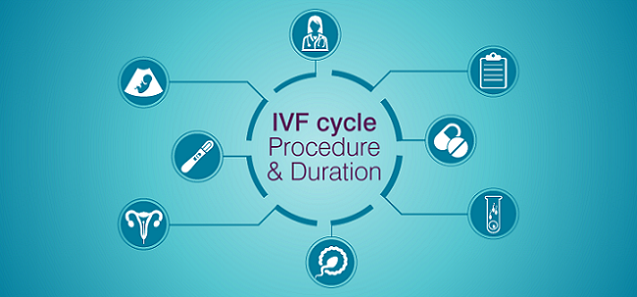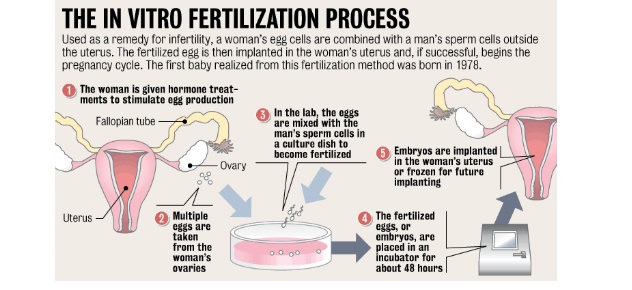![]() The information provided by our expert should not constitute a diagnosis of your condition. Always consult a medical practitioner or healthcare provider for a formal diagnosis. By making use of this content, you agree that ConceiveEasy and the expert assume no liability.
The information provided by our expert should not constitute a diagnosis of your condition. Always consult a medical practitioner or healthcare provider for a formal diagnosis. By making use of this content, you agree that ConceiveEasy and the expert assume no liability.
Whenever a couple is looking into trying to achieve a pregnancy, the first thing they will do is see their doctors and find out what kind of lifestyle changes that they would have to make. Many times those who are about to try to conceive need to make adjustments to their weight, their eating habits, they quit drinking and smoking and doing other bad habits, and learn to manage stress better. Claim Your 20 Free Pregnancy Tests – Click Here
In fact, it is crucial that anyone who is trying to get pregnant must learn to manage stress by learning meditation or taking up yoga. Being under a considerable amount of stress will hinder the chances of pregnancy.
However, once they get the green light to start trying to achieve a pregnancy from their doctors, they start eating fertile-friendly foods. The women begin to chart their cycles and men utilize tips on how to increase their sperm counts and quality by taking lukewarm showers instead of hot ones; and they ditch the briefs and tight fitting jeans, and wear boxers and cotton pants. Women begin taking folic acid and prenatal vitamins.
Then they are also aware of the fact that they need to give themselves a year in order to achieve a pregnancy before they run back to their doctors. That is unless the woman has found that by attempting to chart her cycles she is not ovulating, then she will obviously have to see the doctor much sooner because that is problematic.

However, if the woman is having problems with ovulating or the couple has been trying to conceive over a year and nothing has happened, that is when they have to pay a visit to their doctors in order to find out what the cause for their infertility may be.
Before anything is attempted, the man and woman are going to be thoroughly checked either by their doctor or they will be referred to a fertility specialist. the man’s sperm count and quality will be checked, and the woman’s hormone levels, and structure of her reproductive system will be examined. Her fallopian tubes will be looked into so that it is known whether they are open or not.

If the fallopian tubes are open, the woman will initially go on mild fertility drugs like Clomid to help regulate ovulation.

If the man’s sperm count and quality are normal, then pregnancy should be achieved within 6 cycles.
If the man has a low sperm count or poor sperm quality, then the specialist would move to helping the couple conceive through intrauterine insemination (IUI). That is when the washed sperm is transported via a catheter that goes through the cervix and directly enters the uterus.The purpose is that it bypasses the long reproductive tract since there is less sperm to work with.
If pregnancy through IUI is not achieved within 6 months, then the specialist will need to move to the next step in order to help achieve a conception which is through in-vitro fertilization or IVF. That is one example of a couple having to rely on IVF for conception.

Like it was just mentioned, if 6 IUI cycles were done and none were successful, that is one reason that a couple would have to move to IVF in order to increase the odds of conception.
However, there are many other reasons that couples would have to rely on IVF. One common reason is that the woman has blocked fallopian tubes that were caused by endometriosis or scarring from surgery. If the tubes have been found to be blocked, then IVF or hiring a surrogate to carry their baby would be the only options that a couple could have in order to have their own biological kids.
Another common reason that IVF is relied upon is due to the fact that the man has a very low sperm count even for IUI to be an option. This type of IVF treatment is called intracytoplasmic sperm injection (ICSI) where the sperm would have to be injected into the egg.

One other common reason for IVF is if both the man and woman are not necessarily infertile but both carry a bad recessive gene that could potentially be passed onto their children such as cystic fibrosis or Tay-Sachs disorder. They would have to undergo an IVF procedure called preimplantation genetic diagnosis (PGD) where the embryos are examined before being transferred to make sure they are free of the disease that both parents carry.
Another similar reason that couples would have to rely on IVF is if the woman has a genetic disorder herself which is the reason behind her having multiple miscarriages due to the embryos having many problems with their chromosomal distribution. Therefore, the embryos would be examined to make sure that they are healthy and developing normally before being transferred back. This procedure is called preimplantation genetic screening (PGS).
Sometimes, IVF is also the only procedure that works for couples that have unexplained infertility. That means that nothing is noticeably wrong with them but they cannot get pregnant on their own regardless.
Regardless of the reasons that a couple has to rely on IVF, they are going to be going through a lot of physical, emotional and financial stress. Let’s first look at find out how IVF is done regardless of why.

Once a couple has decided that IVF is the only way to go in order to achieve a pregnancy, they are about to embark on a very long process.

1. The woman first takes hormonal contraception in order to suppress her ovarian function.
2. After that, she starts taking injectable fertility drugs in order to stimulate egg production.
3. She will be monitored at the clinic through ultrasounds and bloodwork to determine how mature her eggs are.
4. Once the eggs are ready to be retrieved, then the woman has to be sedated in order for the eggs to be surgically removed from the ovaries by inserting a hollow needle through the cervix. This is all done while being monitored with the use of a transvaginal ultrasound.
5. Once the woman is awake, she will be monitored at the clinic for a few hours and then be sent home with pain medication and antibiotics to prevent infection. Other than a little bit of abdominal soreness and spotting, there normally are no real complications from the procedure.
6. In the meantime, the man gives a sperm sample to be washed, and the eggs are examined to see which ones are mature enough to be fertilized. The eggs that are not mature will not be used.

7. In most IVF cases, the sperm will be in a dish with the egg, allowing natural fertilization to happen.
8. In the case of ICSI, PGD or PGS, the sperm has to be injected into the egg with a needle-like instrument.
9. If the eggs are properly fertilized, then they will be watched while being divided over 3 to 5 days.
10. If PGD or PGS is involved, the embryos will be biopsied. The diseased or abnormal embryos will be either discarded or sent to research. The healthy embryos will be frozen and be used to be transferred back into the woman’s uterus.
11. The number of embryos transferred back into the woman’s uterus depends mostly on her age.
• If she is under 30, then most clinics will transfer one embryo and keep the others frozen.
• Over the ages of 30 to 35, then there will be two embryos implanted.
• Over 40 there will be more.
The older the woman is, the less likely only one embryo would properly implant. At the same token, there is a higher chance of having a pregnancy with multiples with IVF. Many times even if one embryo is transferred identical twins form as well.

12. The way embryos are transferred into the uterus is through a catheter with the embryo that passes through the cervix and goes directly into the uterus. An abdominal ultrasound is used to monitor this process. However, this is similar to getting a pap and no sedation is needed in this case.
13. In 9 to 11 days after the transfer, a blood pregnancy test can be taken to see if conception was successful. This is a very stressful day for couples for obvious reasons.
14. However, if a pregnancy did not take, the embryos frozen can be used for future uses without having to go through the physical demands of egg retrieval again.
IVF, as you can see, is physically taxing, but financially it is also quite taxing.

IVF in general costs about $10,000 to $15,000 per cycle. However, there are many different types of insurance plans that can cover some of the costs. In fact, it is the law in some states that employers offer infertility benefits.
Either way, IVF is extremely costly even if some of the costs are covered by insurance. Many couples do not have the kind of money laying around that is used for IVF and have to take out a loan or a line of credit in order to do the procedure. Therefore, the financial aspect of IVF is very stressful as well.
Because IVF is physically and financially taxing, it is also a very emotionally taxing procedure.

Couples who tried to conceive on their own for a year without being successful go through a tough emotional time as it is.

Or if women find out that they cannot conceive on their own because of a structural abnormality such as having blocked tubes without knowing is stressful enough.
Men who produce very little healthy sperm are also negatively affected by that alone.
All of that said, couples who are going in for IVF are depressed, anxious and stressed enough as it is. The cost of the procedure, in addition to the physical demands, increases the stress levels.
Additionally, there is that stressful waiting period from when the transfer took place to having the blood test taken to see if the embryo implanted mixed in there as well. Therefore, IVF is stressful!
Even if pregnancy does happen right away, the stress does not end there. There is a worry of a miscarriage happening, especially if repeated miscarriages were the reason that led the couple to conceive through IVF. Then there is a worry about other potential things going wrong.
Couples who are going through IVF definitely need a lot of support from friends, family, and counselors. They can always reach out to their churches, synagogues, mosques or other places of worship.

Women in particular that are dealing with infertility and going through IVF, and have not been successful as of yet have a hard time going to baby showers or visiting their friends who have had babies. In fact, the last thing that these women need is those judging her for declining to go to events that involve other people’s babies. It is like rubbing salt into a wound otherwise.

However, more often than not, couples who undergo IVF for any of the reasons mentioned above do end up with having successful and healthy pregnancies. The odds of success do begin to drop though after the woman turns 30, and this is why many clinics do end up transferring more than one embryo at that point in order to increase the chances of at least one implanting properly.
IVF has been around technically for 40 years as the first person conceived through IVF is turning 40 this year – the first ‘test tube baby.’ However, it was not an option for many people until the ’90’s when technology was becoming more advanced, and today the chances of conceiving through IVF are higher than they were even 20 years ago.
IVF is a tough process financially, physically and emotionally to go through. However, what these couples have to do in order to stay strong is to keep their eyes on the prize.










Comments